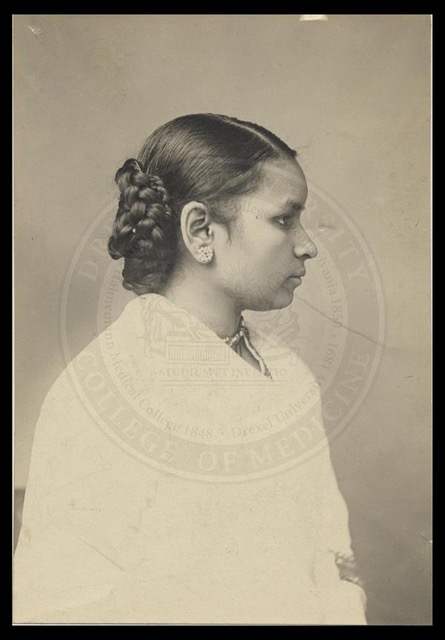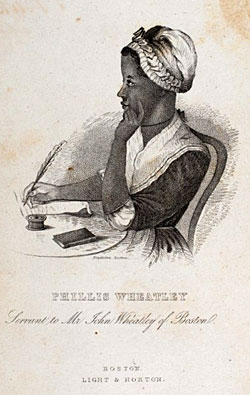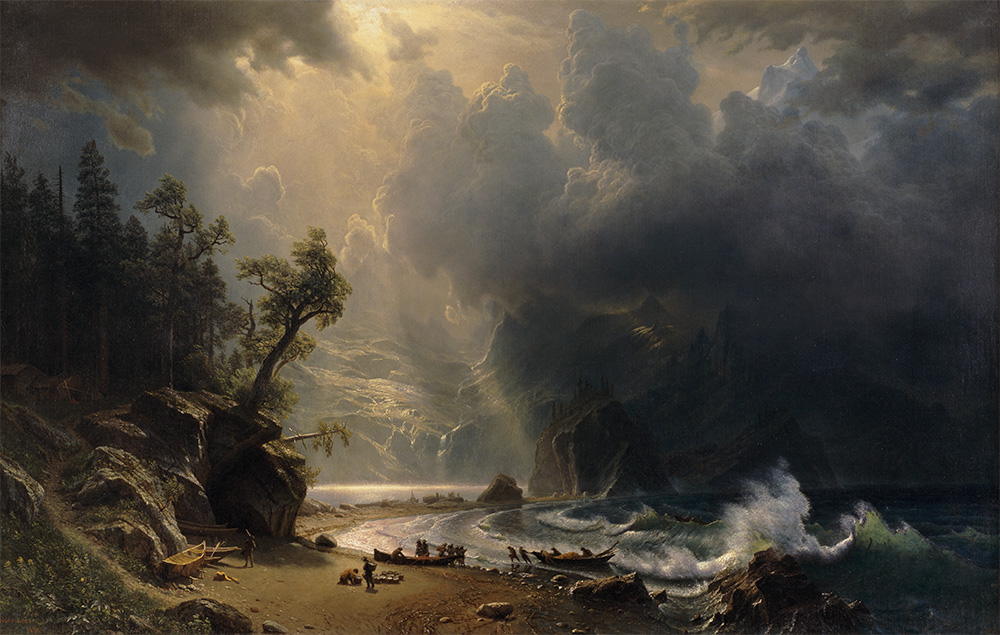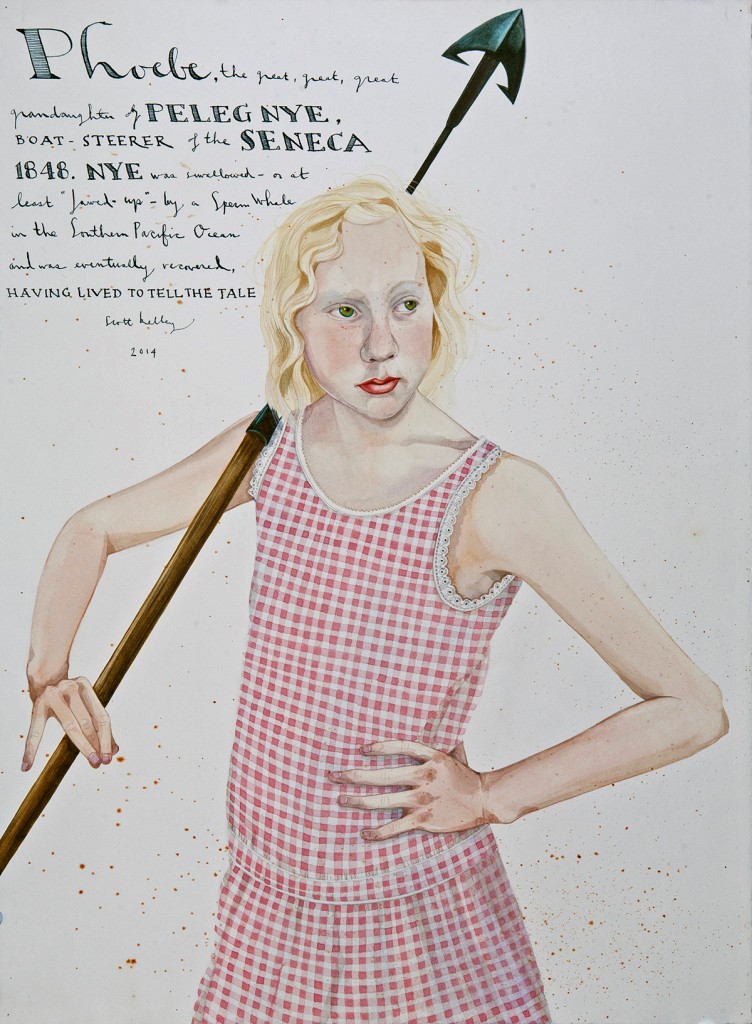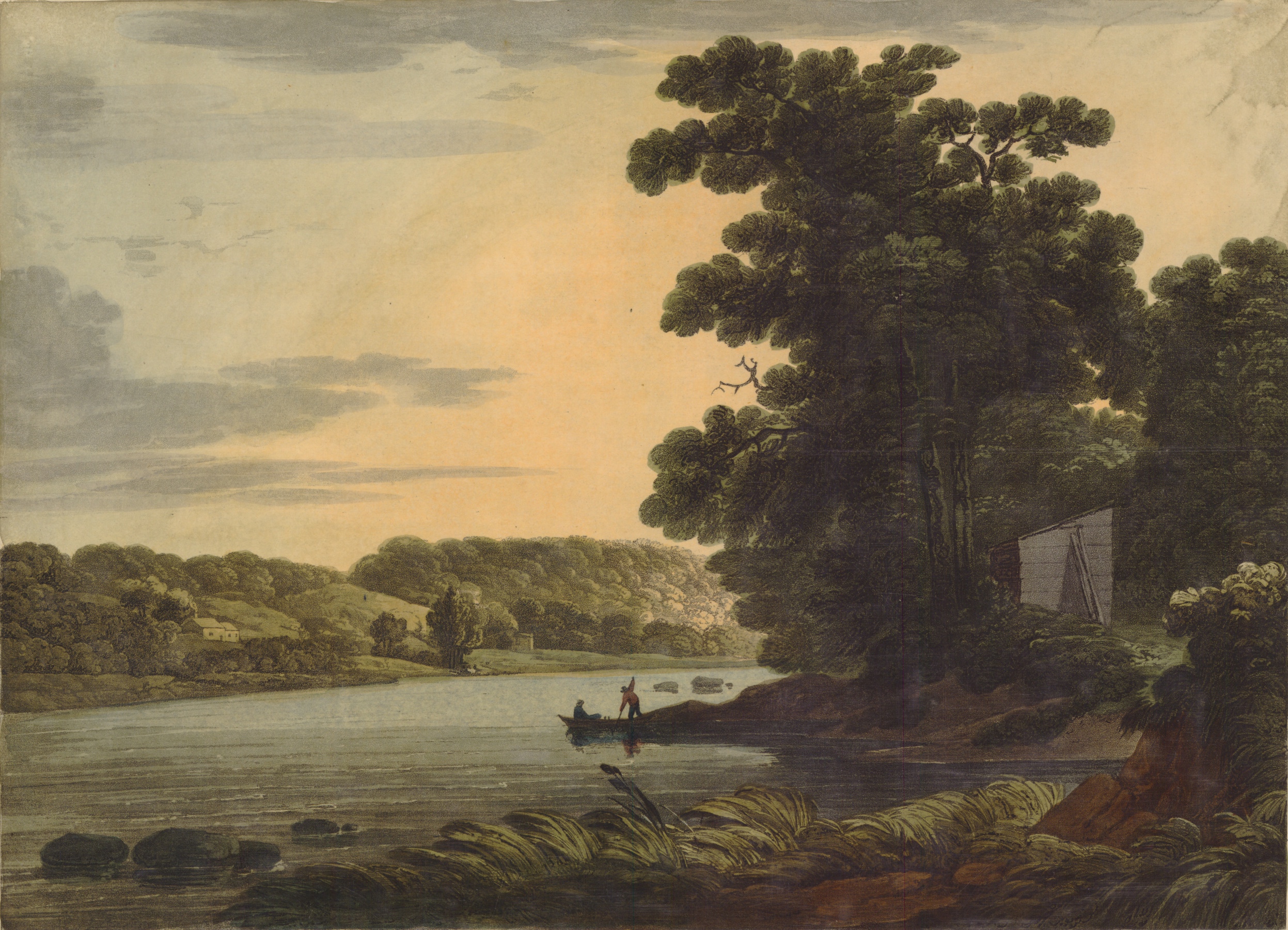Cape Cod 1782
He painted his initials in black inside the windmill. My great grandfather times five, Thomas Greenough, who would come to be known as the last surviving Wampanoag Indian in South Yarmouth, Massachusetts. The Pawkunnawkut Indians in South Yarmouth are part of the Wampanoag Federation of the Algonquins. Though of course there were other relations in Yarmouth, including his own children. But he was the last full Wampanoag in this town, last on the Bass River reservation. His solitary status convinced the town to take his land. Thomas Greenough’s hand on the inner wall beside the winding staircase, beams and tower, overlook: “T.G.” and the date “1782.”
Later, the windmill would be sold, a collector’s item. It now stands next to America’s oldest post office. Vanes raised like arms, canvas hooked in a shroud. My relative had helped lift the windmill with forty oxen and move it to Indian Town. He was thirty-five years old. This was years before the windmill was given to the father of modern assembly on his eightieth birthday by a group of automotive dealers. The owner, Dr. Edward F. Gleason of Hyannis, sold it to the Ford Dealers Association of America for $12,000, the windmill dismantled and shipped to the Henry Ford Museum in Dearborn, Michigan. The oldest windmill on Cape Cod, with my relative’s name inside it like a letter.
The Wampanoags wrote letters, in their own language, about their own land to the U.S. government. In the film, We Still Live Here—Âs Nutayuneân, Eva Blake, a Wampanoag language instructor, said that touching one of those old documents is like touching their hand.
I want to go to Dearborn, Michigan. Touch Thomas Greenough’s black paint initials inside the windmill. The only writing he left in the world that I can find. Thomas Greenough lifted the windmill four years after the town called him the last of his tribe. The town of Yarmouth took back the reservation land through a Writ of Ejectment on March 30, 1779, though at the Yarmouth proprietors’ committee meeting of July 1, 1713, they had agreed “with the Indians where to lay out such land, which land is to lie for their use forever.”
The Wampanoag linguist, Jessie Little Doe Baird said, If someone lost their land, they would say nupunuhshom, I fall down. To lose the right to one’s land is to literally fall off your feet. To have no ground under you. My land is not separate from my body.
Farris Windmill, named for the family who ran it for three generations, is the oldest windmill in America. It was built in West Yarmouth about 1650, according to the Henry Ford Collections’ Farris Windmill “Creator Notes.” Or, the windmill was built in 1633, as reported in several 1935 New York Times articles discussing the uproar that the sale of the windmill caused among Cape residents. In August 2014, the Henry Ford Collections uploaded a recently digitized photo of a 1935 newspaper article: “Protest Removal of Windmill,” which includes an image of Farris Windmill and reports on the “storm of protest” raised by Cape Cod residents.
Ellice Engdahl, digital collections and content manager at the Henry Ford, comments on the article: “This photograph, which appears to capture a newspaper clipping, shows that not every community wanted Henry Ford to purchase and relocate their architectural treasures to Dearborn.” “On a cheerier note,” Engdahl said, she includes a link to another photograph celebrating the sale: “Ford Dealers in Greenfield Village for the Presentation of Farris Windmill to Henry Ford, November 6, 1936,” in which hundreds of men in overcoats and hats cluster before the newly transplanted mill. Many carry walking sticks though the land appears level.
In 1782, Thomas Greenough helped carry Farris Windmill to Bass River where his land had been. That year the mill was bought by David Kelley, who also bought the Wampanoag reservation land. The Kelley name is still on the street sign nearby. As noted by the Historical Society of Old Yarmouth in Images in Time: Cape Cod Views, Thomas Greenough “commemorated the event by writing his initials and the date high inside among the rafters.”
In We Still Live Here, Eva Blake spoke of documents that had been written in Wampanoag hand, written by those fighting for their land. I wonder if Thomas Greenough wrote a letter.
On November 18, 1935, workmen began tearing down the mill for shipment to Henry Ford’s Greenfield Village. Each shingle was marked and packed for shipment. Workers in Dearborn reassembled it. The New York Times said that for years the windmill had been a landmark and a shrine for Cape Cod residents. When the sale was announced, letters of protest were sent from “all parts of the U.S.” Ford collected to help preserve the past, so twenty-two thousand employees of Ford Company pitched in to buy the windmill for him. As workers took each shingle and stone, tore it down in a steady rain, a 24-hour police guard kept watch. People offered $5 for a shingle, but workmen filed them all.
Why does Thomas Greenough have an English name?
Interviewed in We Still Live Here, Aquinnah Wampanoag Linda Coombs said, I think the pressure was convert or die, get harassed out of town, harassed out of life.Was Thomas Greenough an Indian convert? Were his parents? In the First Great Awakening of the 1730s and 1740s, English settlers tried to convert the native people. Thomas Greenough was born in 1747. My Aunt Marguerite, who was the first to search for Thomas, said that he was a Christian Indian and a teacher. His obituary states that “he wore, through the last year of his life, the title of ‘Lawyer.'”
The first Bible printed in America was in the Wampanoag language, John Eliot’s Algonquian Bible. The narratives of Wampanoag conversion to Christianity were collected by John Eliot and published in Tears of Repentance, 1653. In We Still Live Here, a portion of Monequassun’s confession is read: Because I loved the place where I lived I thought I will pray to God so that I could still stay at that place. I prayed not for the love of God but for the love of the place I lived in.
In the Rare Book Room of the Library of Congress, I’d asked for Experience Mayhew’s Indian Converts, Laura Arnold Liebman’s Cultural Edition published in 2008. I expected this recent copy. After a long wait, the librarian placed the original 1727 edition in the cradle on my table: Indian converts: Or, Some account of the lives and dying speeches of a Considerable number of the Christianized Indians of Martha’s Vineyard in New England. The inside cover was stamped: “War Library.” I touched the pages. Who were Thomas Greenough’s parents? What were their names?
A court could say you are the last of your kind, and we will take back your land. So, in the summer of 2012, I drove one morning from Wellfleet to the mid-Cape in search of the deed for Thomas Greenough’s land. At the assessor’s office for the town of Yarmouth, the assessor, Matthew Zurowick, kindly sets me up at the first desk in the office and opens the deed database, searchable back to 1704. On the desk, I place one of the books I’ve brought, Images in Time: Cape Cod Views, and open it to a marked page. It’s Farris Windmill, with Thomas Greenough’s initials “high inside among the rafters.” Matt is still at the desk, my computer, and asks, What windmill is that?
It’s Farris, I say, But now it’s in Dearborn, Michigan.
Guess where I’m from? he asks. Delighted. He grew up near the windmill, the Henry Ford Museum and Greenfield Village—the area by the museum that he says is living, people reenacting time. The windmill is lifted off the ground now, he says, pointing to the windmill wings. See how they reach the ground in the photo? Otherwise, they’d hit people in the head.
Ford couldn’t have been happy with a photograph, a painting of the windmill. He seemed to want not only to preserve the past, but to keep it all in one place, in his village and museum. But when it was taken from Yarmouth, Thomas Greenough’s name and the Wampanoags of South Yarmouth disappeared from the windmill’s history. What could the black painted letters “T.G.” or “1782” mean to Henry Ford? Two letters and four numbers. There is no mention of Thomas Greenough’s initials on Ford’s Greenfield Village Memories website. The past preserved inside the windmill remains unknown to its owner or visitors.
The Oldest Windmill on Cape Cod reassembled in Michigan: the turret is the revolving mill at the top, the red wheel and long post at the back of the tower turn the turret (and the sails). The base is colored rocks: white, gray, tan, charcoal. The danger of the wings isn’t just a tap to the head. It looks like they could decapitate. The shingled peak of the windmill rotates. Shingles dark brown. Front door latched shut, and so high off the ground now, you’d need a ladder to get in. Thomas Greenough must have walked through that doorway to paint his name inside. Above the door, about halfway to the top of the mill, is a tiny open, four-paned window with its own shingled door wide open. Another tiny six-pane is above the new red door inside the stone base.
Ocean wind was the power source, turning the wooden sails that set in motion half-ton millstones on the second floor. Greenfield Village has a Model T Ride, Working Farms, Hearse Shed, Frozen Custard, Porches & Parlors, Edison at Work, Sarah Jordan’s Boarding House. You could spend days here, eat at a nineteenth-century roadhouse, shop at the Greenfield Village Store. The mill looks lonely. No people in the photograph, no ocean breeze. Inside, Henry Ford holds a message from Thomas Greenough. Ford’s wealth, his antique love, his 22,000 employees bought the only known writing in the hand of the last surviving Wampanoag of South Yarmouth, Massachusetts. Without even knowing it. Under the blue sky, lost among the other artifacts.
I’d begun writing the poem “Farris Windmill, South Yarmouth, Massachusetts” after reading in Daniel Lombardi’s Windmills of New England: Their Genius, Madness, History, & Future that Thomas Greenough had painted his initials inside the mill when he helped to move it. Images in Time: Cape Cod Views from the Historical Society of Old Yarmouth also mentioned this, as does a Yarmouth Register newspaper article from 1894, as well as other sources. I’d been fascinated with Thomas Greenough since my Aunt Marguerite had given me a copy of her genealogical research and our family tree traced back to him and his wife, Jane Freeman.
The next document I discovered was his obituary in the Barnstable County Archives. The more I read about his life, the more I wanted to find Thomas Greenough in whatever way possible. The town had reclaimed the Indian lands in 1778 after the smallpox epidemic, but apparently Thomas Greenough did not abide by that decision. On March 30, 1779, a court case was settled against him “for setting his house and making improvements on land that was laid down for the Indian inhabitants to live upon, contrary to the directions of the Selectmen. This land had been formally sold and transferred by the town, to various parties for an ample consideration; and after some subsequent litigation, the town’s action was sustained by the courts of law.” He lived the remainder of his life on a pond that now bears his name, Greenough’s Pond, until he went to the town almshouse and died at the age of 90.
The tone used by Thomas Greenough’s obituary writer gives a sense of how the townspeople viewed Greenough’s right to his land:
“…and though always supplying himself with such wild productions as he found upon what he called and believed to be his own territory, but the legal seizing of which unfortunately was the home of his white neighbors —”
The obituary writer also romanticized Thomas Greenough as “the last of his kind.”
When I discovered, through the Yarmouth Cemeteries Department, that in 1826 the town selectman “voted that Thomas Greenough & all other people of colour, be requested to remove their dead from the place where they are now deposited & bury them in the (unmarked) Southeast corner of the burying ground, as is to be laid out by the Selectmen for that purpose,” it was striking that Thomas Greenough is the only person of color named.
I wondered how a person lives when so many things are taken away, when the land itself is taken, even though, as Jessie Little Doe Baird said, this loss means to have no ground under you. I’d been working on essays and poems about Thomas Greenough, but until I found the windmill, the only way to touch Thomas Greenough was to walk into Greenough’s Pond. Though I’ve yet to travel to Dearborn, Michigan, I’m heartened that his writing exists. This tangible evidence. That when I touch it, it will be, as Eva Blake said, like touching his hand.
While it seems most likely that Thomas Greenough painted his initials in the mill after helping to move it, others think he was a builder of the mill. I recently came across the Dennis Historical Society’s digitized copy of W. F. Kenny’s article, “The Old Farris Grist Mill,” in the Yarmouth Register, April 14, 1894, which noted Thomas Greenough’s initials and the date painted in black on “one of its massive oak posts” and states: “It is thought that the figures indicate the year it was built and that the letters stand for Thomas Greenough, the builder; but no one knows with certainty.”
The Dennis Historical Society follows this with a typed and footnoted version beneath the original 1894 article. In this update, footnote no. 9 confirms that “Thomas Greenough was, indeed, one of the builders. He also has the distinction of being the last surviving Native American in South Yarmouth. The mill was built by a group of men, under the direction of Samuel Farris, and Thomas Greenough was one of them.” Yet this conflicts with the known age of the windmill itself. Thomas Greenough wasn’t born until 1747, and the latest date for the windmill’s construction is about 1650. I did consider revising the poem to include this new possibility—Thomas Greenough as builder—but the dates are so off, it seems impossible. Though it further convinces me of the importance of discovering what I can of Thomas Greenough and the need for clarity.
As I wrote this, I watched the dawn in Provincetown’s West End, a five-minute walk from Pilgrims’ First Landing Park. The year before the Pilgrims first landed here in 1620, a smallpox epidemic killed two-thirds of Native Americans in the Massachusetts Bay. So many that the Pilgrims’ leader, John Winthrop, thanked God for their deaths as it left the land seemingly empty for the Pilgrims to take. Pink rose along the Cape Cod Bay, blue above. I’d been writing all night at a green Formica table facing an old church pew against a wall of 80 small windowpanes, each the size of a hand. I’d been surprised to learn that this borrowed loft had originally been the Nickerson/Freeman house in the early 1800s, family names of Thomas Greenough’s wife and of his descendants. Here at the end of the earth lived someone with the family name of Jane Freeman, my fifth great-grandmother, and the name of her daughter-in-law, Deborah Nickerson, my fourth great-grandmother. When I expressed doubt that these Nickersons and Freemans in Provincetown were connected to those in Yarmouth, my neighbor said, The world wasn’t that big. It’s the same name, they’re connected. I feel my ancestors connect in me, as if I am a kind of physical map. A map with a key, a legend I’m just learning how to read. The rising sun also reminded me that this place had been home to the Wampanoags for over 15,000 years. Wampanoag means “People of the First Light.” When I imagine Thomas Greenough, I see him painting the letters of his name, walking the streets of South Yarmouth after his court case. I see him at Greenough’s Pond. Dying in the almshouse, a man of “wild productions.” I would like to see him as clearly as I can. And someday to reach out and touch his hand.
Further Reading:
Director Anne Makepeace’s We Still Live Here—Âs Nutayuneân, is a PBS Independent Lens documentary (2010). John Eliot’s Algonquin Bible is Mamusse wunneetupanatamwe Up-Biblium God naneeswe Nukkone Testament kah wonk Wusku Testament. The Holy Bible Containing the Old Testament and the New Translated into the Indian Language (Cambridge, Mass., 1663). For more on Wampanoag conversion narratives, see John Eliot and Thomas Mayhew’s Tears of repentance, or A further narrative of the progress of the Gospel amongst the Indians in New-England (London, 1653); Experience Mayhew’s Indian converts: Or, Some account of the lives and dying speeches of a Considerable number of the Christianized Indians of Martha’s Vineyard in New England (London, 1727); and Laura Arnold Liebman’s Cultural Edition of Experience Mayhew’s Indian Converts (Amherst, Mass., 2008). For more on Farris Windmill, see Images in Time: Cape Cod Views from the Historical Society of Old Yarmouth (Yarmouth Port, Mass., 2003); Daniel Lombardi’s Windmills of New England: Their Genius, Madness, History, & Future (2003); and the Dennis Historical Society’s “The Old Farris Grist Mill,” in Yarmouth Register, April 14, 1894. For more on the Farris Windmill sale, see “Ford Buys Country’s Oldest Windmill” in New York Times, November 10, 1935; “‘Too Late on Windmill’: Cape Cod Can Do Nothing to Bar Removal By Ford,” in New York Times, November 13, 1935; “Start Dismantling Oldest Windmill,” in New York Times November 16, 1935. For more on land issues, see Simeon L. Deyo’s History of Barnstable County, Massachusetts (New York, 1890) and Charles Francis Swift’s History of Old Yarmouth: comprising the present towns of Yarmouth and Dennis from the settlement to the division in 1794, with the history of both towns to these times, published by the author in 1884.The Henry Ford Collections’ recently digitized newspaper article on the sale of Farris Windmill,“Protest Removal of Windmill,” is available. The related photograph, “Ford Dealers in Greenfield Village for the Presentation of Farris Windmill to Henry Ford, November 6, 1936” is also online.
This article originally appeared in issue 15.1 (Fall, 2014).
Kelle Groom is a poet and memoirist. Her memoir, I Wore the Ocean in the Shape of a Girl (2012) is a Barnes & Noble Discover Great New Writers selection, New York Times Book Review Editor’s Choice, a Library Journal Best Memoir, Oprah O Magazine selection, and Oxford American Editor’s Pick. She is the author of three poetry collections: Five Kingdoms, Luckily (2010), and Underwater City (2004). Her work has appeared in AGNI, The New Yorker, New York Times, Ploughshares, Poetry, and Best American Poetry. She is the recipient of fellowships from the American Antiquarian Society, James Merrill Writer-in-Residence Program, Black Mountain Institute, University of Nevada-Las Vegas, Library of Congress, Djerassi Resident Artists Program, Millay Colony for the Arts, Atlantic Center for the Arts, Virginia Center for the Creative Arts, Sewanee Writers’ Conference, and Ucross Foundation. Her awards include a 2014 National Endowment for the Arts Literature Fellowship in Prose, as well as a state of Florida Division of Cultural Affairs grant, two Florida Book Awards, and a Barbara Deming Memorial Fund grant. Recently distinguished writer-in-residence at Sierra Nevada College, Lake Tahoe, she is now on the faculty of the low-residency MFA program. She is currently at work on her second memoir, The Cartographer’s Assistant, and her fourth poetry collection, Letter from Aphrodite.




